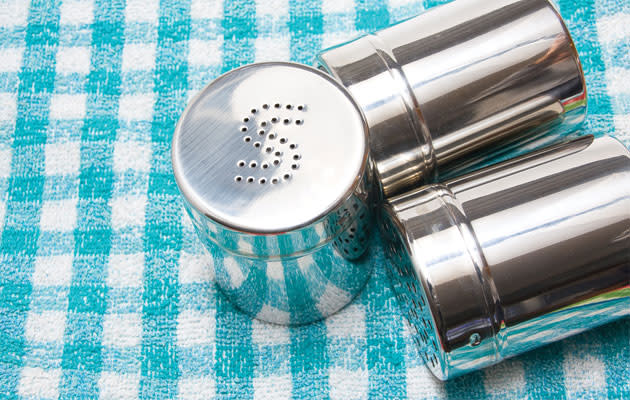 Fit to Post Health
Fit to Post HealthHow to lower blood pressure by eating right

You have high blood pressure, or hypertension, if your blood pressure reading is persistently 140/90 mm Hg or higher. If left unchecked, hypertension can cause stroke, heart attack and kidney failure, amongst other complications.
Some risk factors for high blood pressure, such as age and family history, cannot be controlled. However, many other factors can be managed. For example, you can optimise your diet.
According to the Health Promotion Board (HPB), as many as eight out of 10 Singaporeans are consuming more than the daily recommended allowance of 2,000 mg of sodium.
“That’s about 1 teaspoon of salt, or 5 g, but Singaporeans are consuming 8.3 g of salt on average,” says Mr Gary Chiah, Senior Dietitian, Department of Dietetics at Singapore General Hospital (SGH).
Indeed, it’s all too easy to consume too much salt when eating out in Singapore. The tasty gravies, curries, soups and sauces added to your plate of rice and noodles are often high in salt and should be avoided.
Beyond cutting out excess sodium, there are many ways you can tweak your diet to better control your hypertension, or reduce your risk.
Related article: Think nothing served at a food court is healthy? Think again
Here are dietary tips to control high blood pressure:
1. Cut down on sodium by saying no to gravy, canned foods and processed foods
When eating out, ask for no or less gravy with your mixed vegetable rice. Also, go easy on soups, dipping sauces and creamy salad dressings.
Avoid canned foods and soups as they tend to contain lots of sodium. Canned beans for example, can contain as much as 500 mg of sodium per serving. However, there are some canned foods with lower sodium content. Look out for these foods that come with the healthier choice logo.
Frozen peas and pasteurized milk are fine, but potato chips, processed meats (bacon, ham, luncheon meat) and frozen dinners are all too high in sodium.
2. Cut down on calories and reduce intake of fatty foods to lose excess weight
Excess body weight is linked to hypertension. Asians should aim for a healthy BMI of 18.5 to 22.9 and keep their waistline trim. Asian men with a waist circumference over 91 cm and Asian women with a waistline over 81 cm, have a higher risk of hypertension.
One good way to lose weight is to reduce dietary fat. One gram of fat contains 9 calories. Carbohydrates and protein contain less than half these calories. Therefore, you can reduce your calorie intake by cutting down on deep fried foods, cream and pastries.
It’s especially important to reduce saturated fats which increase the risk of clog arteries. Saturated fats are found in red meat, full-fat dairy products and oils rich in saturated fat e.g. coconut oil. Choose fish, lean cuts, skinless poultry and low-fat milk instead.
Related article: Did you know even ice cream has salt? Here are other foods you’ll never expect to contain salt
3. Eat more potassium-rich foods
Make sure you eat sufficient fruits and vegetables as they are rich in potassium. For vegetables, you could choose peas, greens, tomatoes, spinach and potatoes. Fruits such as bananas and oranges and dried fruits such as raisins, apricots, prunes and dates are also high in potassium. Remember to get your potassium from food, not supplements, to avoid any risk of overdose.
4. Increase your daily intake of fibre
Fresh vegetables and fruits are also good sources of fibre which helps keep hypertension under control. HPB recommends a minimum of 2 + 2 servings of fruit and veggies per day. One serving of fruit is equivalent to one small fruit, 1 medium banana, 10 grapes or ¼ cup of dried fruits. One serving of vegetables is 100 g (or ¾ of a mug) of cooked vegetables.
Related article: Want more eating tips? Get 3 more eating tips here!
Get more health tips at HealthXchange.com.sg and sign up for our FREE e-newsletter.
By Teresa Cheong for HealthXchange.com.sg.
Health Xchange's articles are meant for informational purposes only and cannot replace professional surgical, medical or health advice, examination, diagnosis, or treatment.


